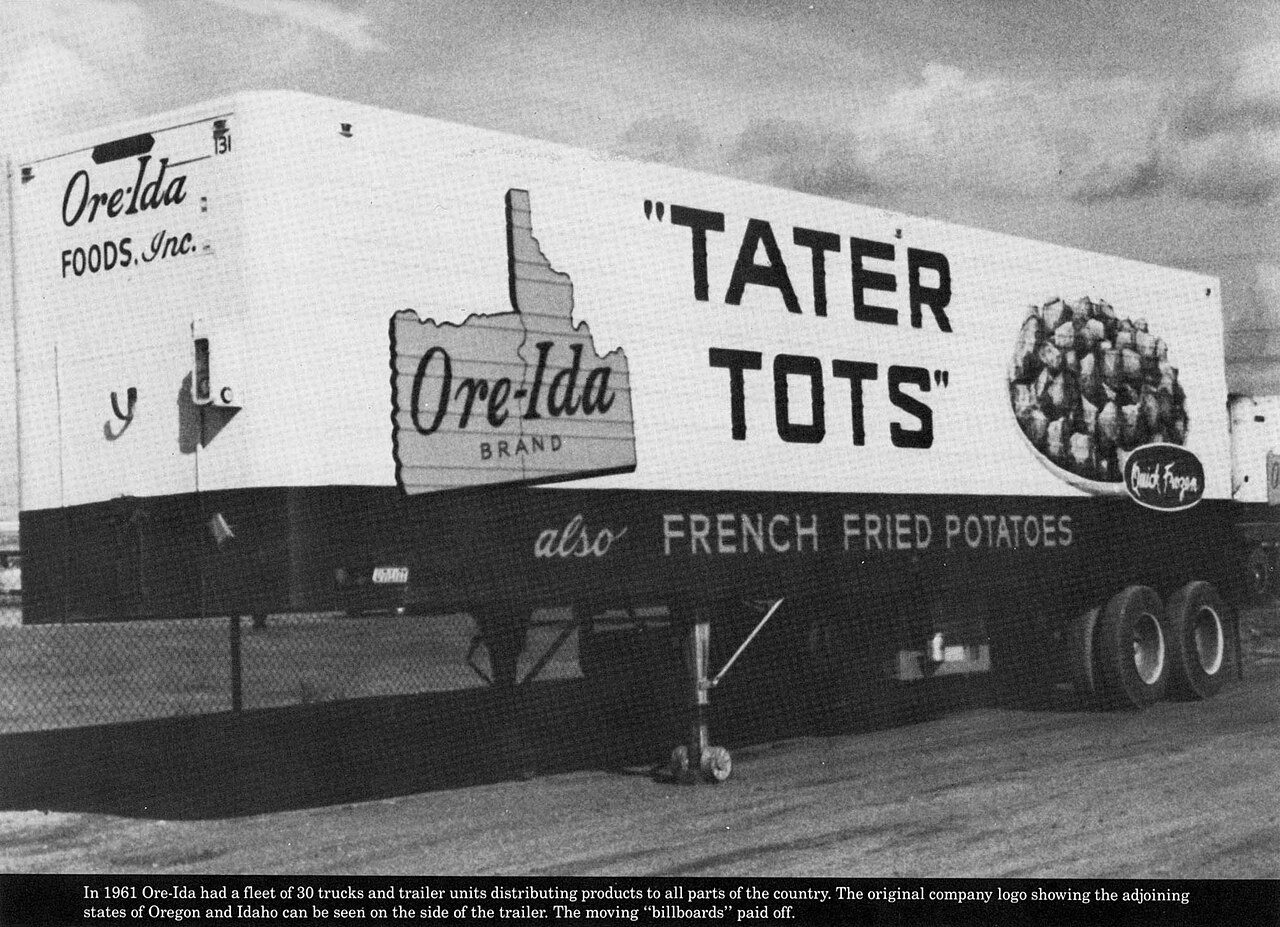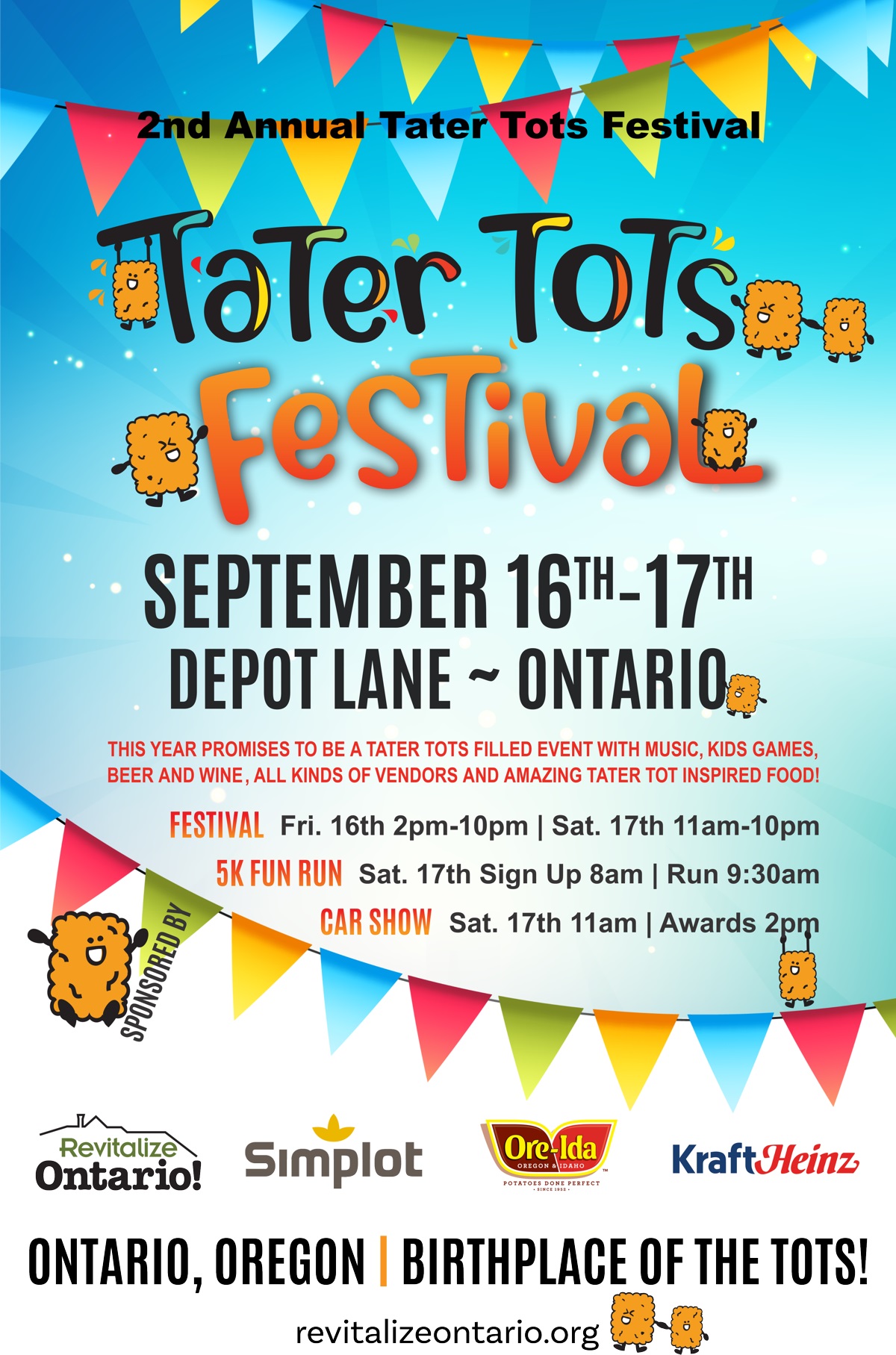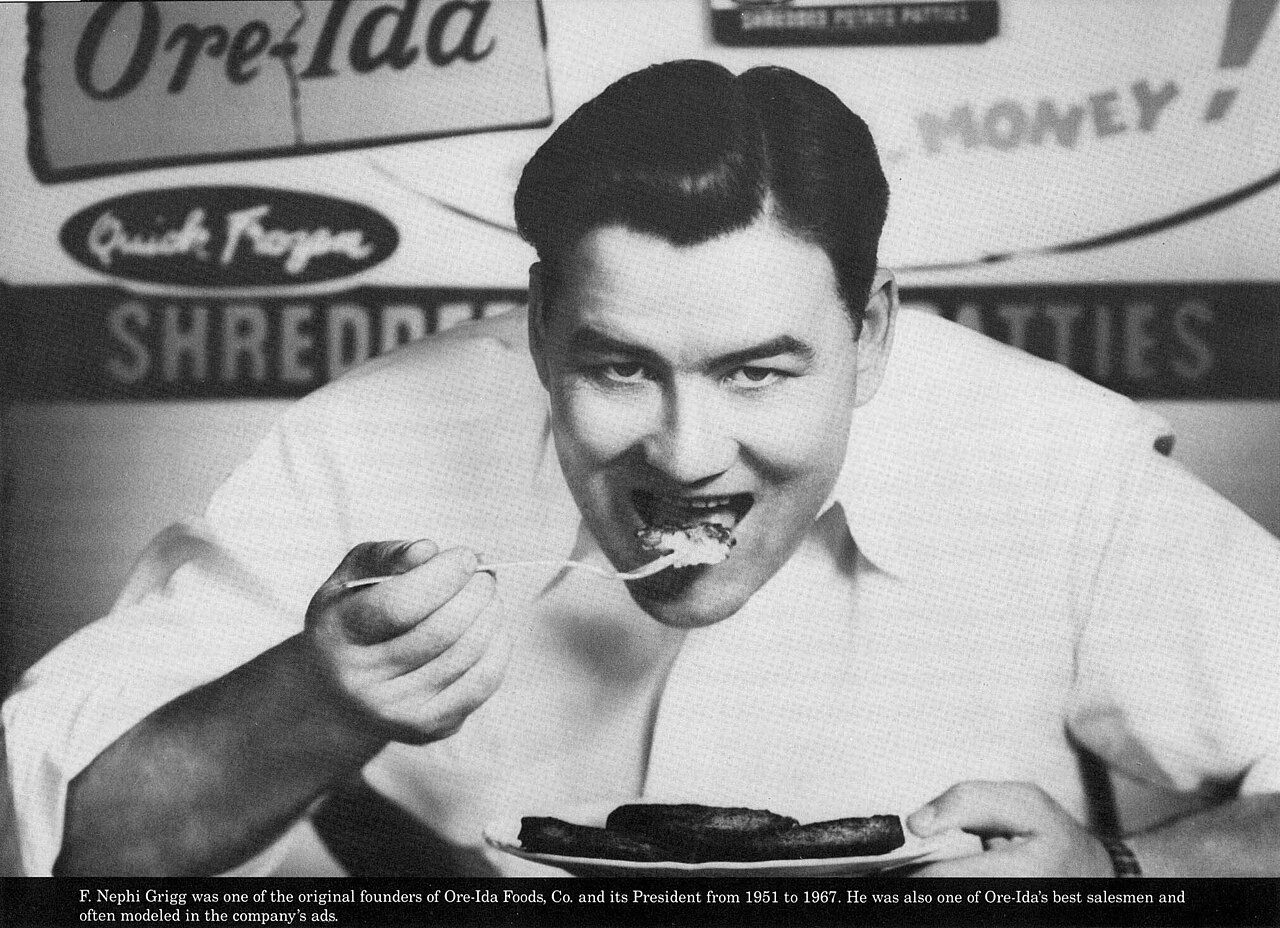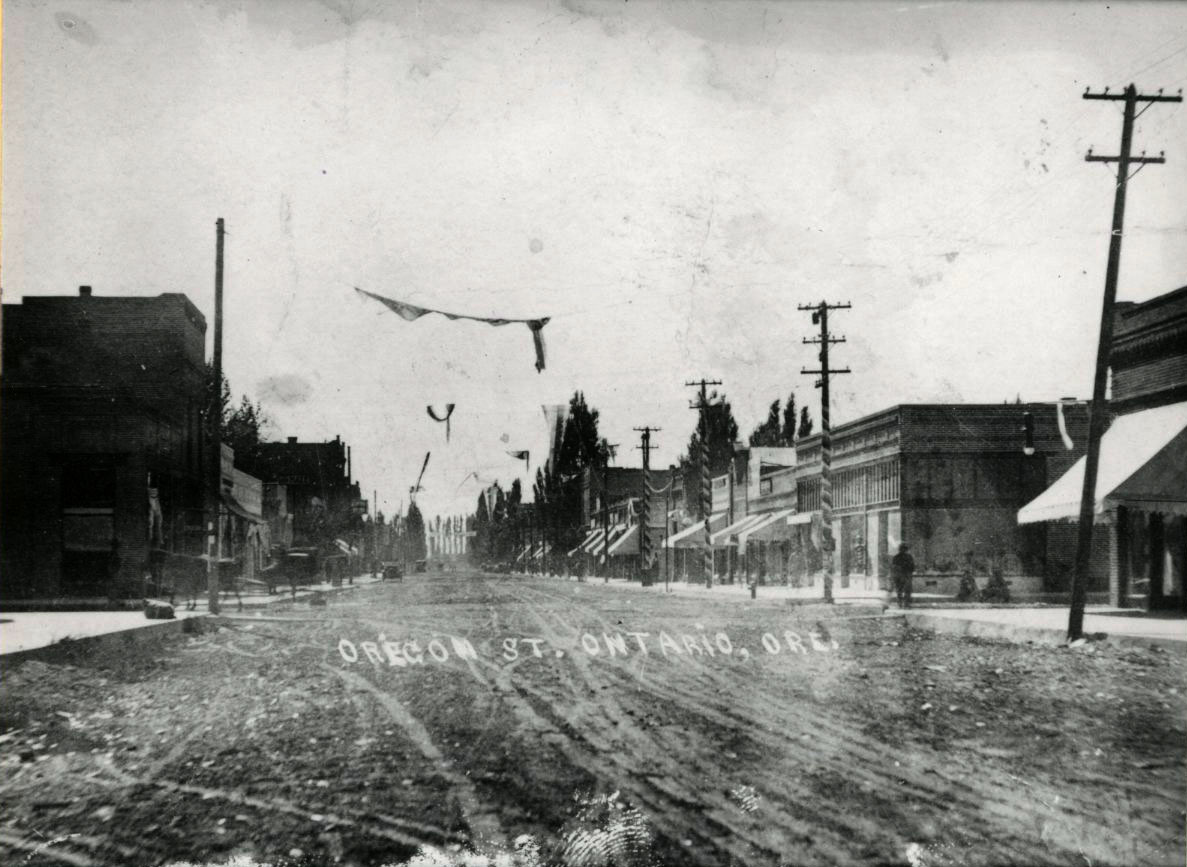Tater Tots, one of America’s most beloved frozen foods, was invented in 1953 by two enterprising brothers in Ontario, Oregon. Tater Tots, under different names, are now produced by different companies around the world—as Potato Gems and Potato Royals in New Zealand and Australia; Tasti Taters and Spud Puppies in Canada; as Mat-gamja in Korea; and in the United Kingdom as Oven Crunchies and Mashtags, “potato shapes for the social media generation.” Tater Tots have been featured in movies such as Napoleon Dynamite (2004) and Venom (2018) and are the center of the unofficial state dish of Minnesota—Tater Tot Hotdish, a ground beef casserole topped with Tater Tots.
Theodore Golden Grigg (1911–1991) and Nephi Grigg (1913–1995) grew up on a small dairy and cattle farm near Nampa, Idaho, in a family of thirteen children. In 1935, they moved to a farm near Vale, Oregon, in Malheur County, where within five years they formed Griggs Brothers Produce Company, which sold corn and potatoes. After World War II, the brothers began supplying their crops to a frozen food plant, which a California company had opened in 1943 in nearby Ontario. When the plant went into bankruptcy in 1950, they formed the Oregon Frozen Foods Company, leased the facility, and began producing frozen corn and French fries. In 1952, they purchased the plant with other local investors and formed a subsidiary, Ore-Ida Potato Products—the name an amalgam of “Oregon” and “Idaho.”
By 1953, Ore-Ida was using a redesigned prune sorter to mechanically separate the fries from leftover potato scraps. For a time, the scraps were used in cattle feed, but Nephi Grigg was not happy seeing a “product that had been purchased from the grower, stored for months, gone through the peeling process, gone thru the speckling lines and trimmed of all defects, only to be eliminated into the cattle feed.” The brothers experimented, mixing the potato scraps with flour and seasonings, extruding the potato slurry through holes in a plywood board, and then blanching, quick frying, and freezing the result into nuggets.
Nephi Grigg took a fifteen-pound bag of their invention to the 1954 National Potato Convention in Miami Beach, where he persuaded the convention hotel kitchen staff to serve up samples at breakfast. “These were all gobbled up faster than a dead cat could wag its tail,” Grigg recalled. There are several stories of how Tater Tots got its trademarked name, but Steve Grigg, Nephi’s son, prefers the version in which Ore-Ida employee Clora Lay Orton came up with the name in a factory-wide contest.
Tater Tots were slow to take off when they first appeared in grocery stores in 1956. Steve Grigg believes that consumers were suspicious of a product made from potato scraps, and he recalled that his father and uncle considered it a humble product and priced it too low. “It wasn’t until they increased the price and made it a premium product,” he wrote, “that people realized it was something.” By 1960 Ore-Ida had gained 25 percent of the frozen potato market and was selling Tater Tots throughout the United States and in parts of Canada. The company employed 1,300 people in the Ontario area and had a payroll close to $3 million.
Ore-Ida opened a second, larger plant in Burley, Idaho, in 1961, and the company went public, selling 200,000 stock shares to 3,500 investors. More plants were opened to meet the demand, and sales reached $31 million in 1964. The next year, the Grigg brothers sold Ore-Ida to H. J. Heinz for $30 million (about $287 million in 2023 dollars). They remained with the company for a few years but retired by the end of the decade. Heinz merged with Kraft Foods in 2015, and Ore-Ida continues as a subsidiary of the food giant, with about $500 million in sales in 2022. The original Ontario plant was sold in 2022 to a frozen food competitor, J. R. Simplot Company, which continues to produce Ore-Ida products under contract to Kraft Heinz. In 2023, the plant operated with about 600 employees.
In September 2021, Ontario held its first Tater Tots Festival. An estimated 1,300 people attended the two-day event, which included a Tater Tot-eating contest and cooking competition. The festival is expected to continue as a celebration and promotion of Ontario, the “birthplace of Tater Tots.”
-
![]()
Ore-Ida truck trailer carrying Tater Tots, 1961.
Courtesy wikicommons -
![]()
Tater Tots Festival, Ontario, Oregon, 2022.
Courtesy Revitalize Ontario -
![]()
Ore-Ida Tater Tots packaging, 1950s.
Courtesy Ore-Ida (Heinz-Kraft)
-
![]()
Nephi Grigg, co-founder of Ore-Ida and the tater tot.
Courtesy wikicommons
Related Entries
-
![Kettle Foods, Inc.]()
Kettle Foods, Inc.
When Kettle Foods began producing Kettle Chips in Salem in 1982, the co…
-
![Ontario]()
Ontario
Ontario, the largest city in Malheur County, is on the Snake River near…
Map This on the Oregon History WayFinder
The Oregon History Wayfinder is an interactive map that identifies significant places, people, and events in Oregon history.
Further Reading
McKinney, Kelsey. “The Tater Tot Is American Ingenuity at Its Finest.” Eater, August 28, 2017.
Prewitt, Andy. “Birthplace of Tater Tots to Hold Festival That Pays Homage to the Cylindrical Spud Snack.” Willamette Week, September 15, 2021.
Debczak, Michele. “7 Tasty Facts about Tater Tots.” Mental Floss, January 23, 2020.
Tran, Lina. “Everything You Need to Know about Hotdish.” Eater, May 15, 2016.
Hewitt, Griffin. "Tater Tots Are Back in Town." Ontario Argus, September 14, 2022.
“2022 Tater Tots Festival.” Revitalize Ontario, March 29, 2023.






